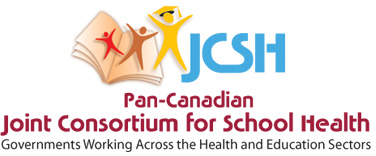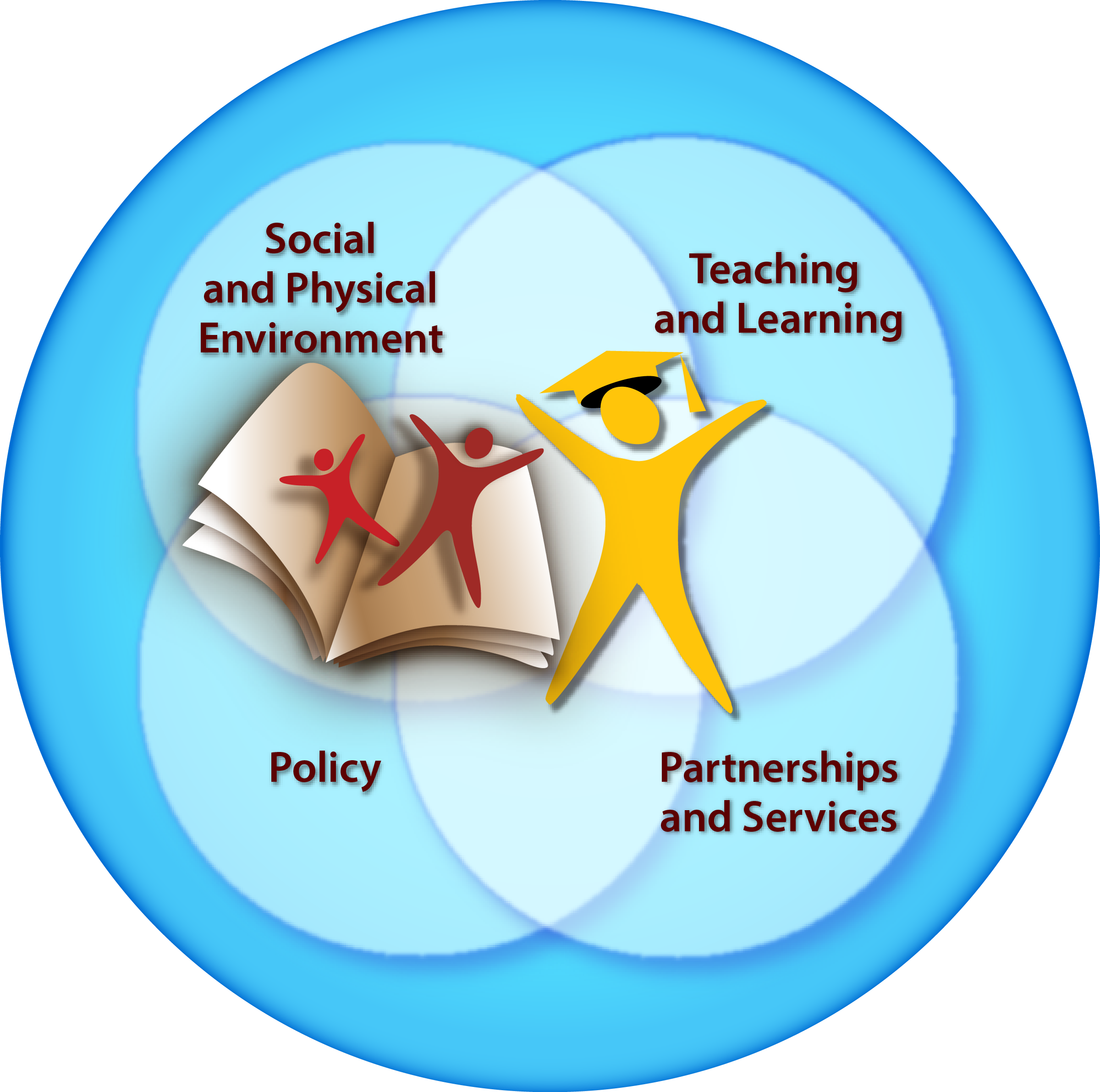Systems Capacity and Change
Key Organizational Capacities for Sustaining Comprehensive Approaches to Health Promoting Schools
In recent years, school health proponents, program planners, and policy-makers have recognized the need for a more systematic and policy-oriented approach to comprehensive school health.
Although there is little definitive research on effective implementation of a comprehensive integrated school health program, there is considerable evidence supporting the effectiveness of action in specific issue areas. Using a comprehensive approach has the potential to significantly expand on these successes. However, this approach is also complex and difficult to implement and sustain in a meaningful way.
Success rests on sharing a common vision and goals and developing school programs that address the common determinants of health and academic outcomes. Lawrence St. Leger and Don Nutbeam suggest an increasing coincidence of school-related outcomes, school-based intervention, and inputs such as curriculum, professional development, policy, and organizational practicies that affect both the education and health outcomes of students. They provide a map that is useful for joint school health planning and implementation, one where there can be agreement on the actions to take and the reasons for these actions.
To sustain implementation of comprehensive approaches, many countries and state/provinces are focusing on policy, coordination, and strengthening the organizational capacities of school, public health and other systems to institutionalize internal and external relationships, responsibilities, and accountabilities for school health promotion. The following key capacities have been identified from a review of several national school health policies, a World Health Organization guide, reviews of literature on interagency coordination, and interview with key informants in several countries.
Key Capacities
Coordinated policies on school health, health issues and the elements of school health promotion are sometimes played out in local or provincial/territorial interagency agreements that may include financing, administration and organization. These explicit, comprehensive policy and managerial supports for inter-ministry, interagency and inter-disciplinary coordination and cooperation should include procedures in policy-making, program planning, and budget preparation to align responses to health and social issues undertaken through and with the school systems. As well, an overarching policy should favour inter-sectoral approaches and it should be reflected in guidance and directives to school, public health, police, social service and other local authorities and agencies.
Mechanisms for coordination and cooperation, both formal and informal, help to manage the implementation process, avoid confusion, and capitalize on synergistic action. Mechanisms may include joint committees, job descriptions, written policy statements, joint in-service programs, joint planning, shared budget allocations, joint vision development and consensus building.
Assigned staffing and infrastructure, such as provincial/territorial and district school health coordinators, help to facilitate and support interdisciplinary coordination and cooperation in school health promotion. These staff assignments should include time for actively supporting voluntary cooperation and alignment of activities, programs, polices and practices. They should be based on explicit intergovernmental, inter-ministry, inter-agency and inter-disciplinary agreements and should ensure that the voices of youth, parents, professionals and volunteers are heard in the decision-making about policies and programs.
Continuous workforce development ensures ongoing development for teachers, administrators as well as public health professionals. It includes explicit and sustained programs and processes to develop ministry and local agency workforces, through studies of current professional practices, guidance and support for the development of university and college pre-service preparation programs, and development of guidelines, models and materials for sustained staff development programs.
Knowledge transfer and exchange within and across systems, includes mechanisms and processes to sharing evidence as well as local solutions and ideas for implementation, funding and evaluation with decision-makers and practitioners to describe lessons learned and promote promising practices. This would included evidence-based knowledge summaries published by a variety of sources, guidelines for policy, programs and practice from provincial, territorial and professional sources and tools and models that enable decision-makers and practitioners to reflect on their situation and their practice and to locate materials and models that can be adapted to their circumstance.
Collecting and sharing reliable data entails the regular and timely collection and communication of data on the health outcomes, social behaviours and related learning of children and youth, and their connectedness to parents, schools and the community. These data are for use in appropriate decision-making and indicators systems and can be gleaned from periodic surveys of local agency policies, programs, and system capacities without implying a supervisory role or identifying survey participants. It is also important to develop explicit and agreed upon procedures and processes to conduct regular scans of health, social, educational environments to identify emerging trends, plan responses, and suggest actions for policymakers and agencies.
Long-term planning and sustained funding are essential for sustainability. They ensure the continuance of programs that demonstrate effectiveness, based on regular evaluations that shed light on program process, context and outcomes. Financial resources are needed for staff, personnel training, infrastructure changes, coordination, intersectoral participation and dissemination to support continued implementation and school health promotion action and evaluation plans.

